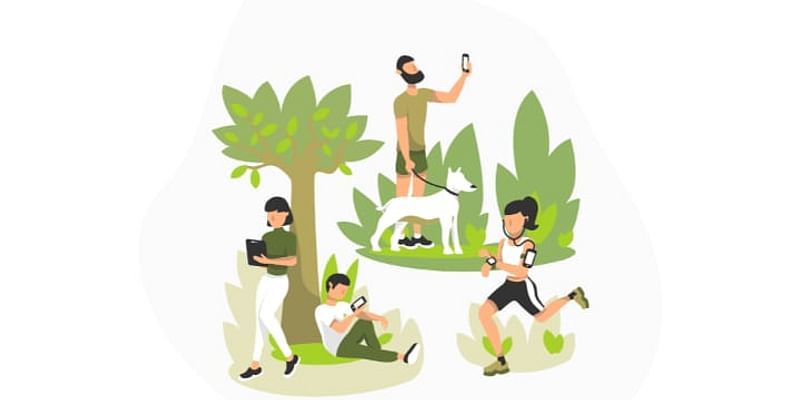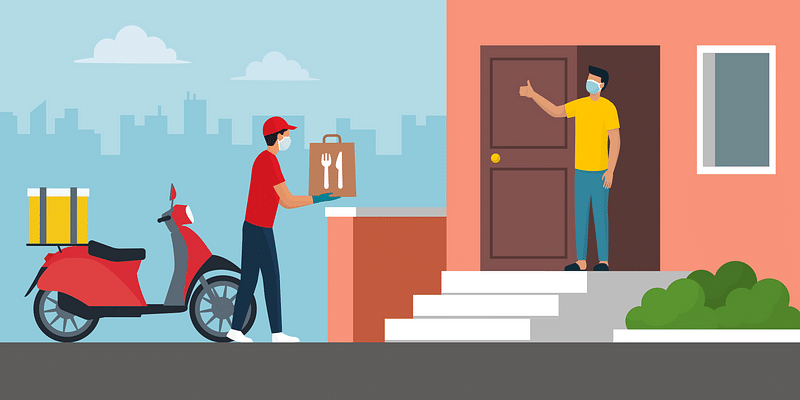Coronavirus: This app helps people connect with others in their neighbourhood
Simply Local is a hyper local broadcasting system that was devised to bridge the communication gap between the residents and the civic bodies. The app has been particularly useful in helping locals disseminate information to people near them, during the coronavirus lockdown.
Effective communication during a crisis is of paramount importance. It not only informs people about the goings-on, but can potentially save lives.
During the coronavirus lockdown, people were able to tune in to global broadcasts via their smartphones, personal entertainment systems, or even the radio. But hyper-local communication was almost absent, and the information-starvation led to the rumours being circulated, and myths perpetuated.
Anticipating crises like the coronavirus pandemic, Simply Local, a broadcasting app, was set up in 2016.
The platform is a one-stop-shop for all information about a user’s locality. Residents in a particular location can post about the latest developments in their area, review businesses around them, as well as keep a closer eye on any government orders issued for their neighbourhood, among many other things.

Nikhil Bapna, Founder and CEO of Simply Local
The app has proved particularly useful during the COVID-19 crisis, allowing residents to keep in touch with their local civic bodies.
In a conversation with Social Story (SS), Nikhil Bapna, Founder and CEO of Simply Local, talks about the benefits of the app, and how it has been helping people during the lockdown.
Local as can be
Simply local is the third generation of social media, after Orkut and Facebook, helping smaller groups of people connect to a bigger cause. The app logs every user into the community network where they can share updates viewable to only those within the locality.
Using the latest geofencing technology, localities are demarcated and separated from the other, and thus, the platform essentially serves as a ledger of residents in the area, as well as a social media platform for a residential society.
“While each colony in a large city is an independent network, villages become a community network within itself,” Nikhil tells SS. “We try and keep up to 10,000 residents in each network.”

Each community operates independently of the other, and access to information shared on the platform is restricted to users living in that particular community only.
“Privacy and security are a priority for this app,” says Nikhil. “We have systems to check the posted content. There are many additional features that can protect users on the platform, as well.”
The primary goal of the app is to bridge the gap between the residents and the local government bodies, so that urgent civic matters can be pushed to those who can resolve them quickly.
The app is completely self-funded, with the money that the founder had received via stock market trading. The investors have completed due diligence for additional funding.
Community engagement during the crisis
During the initial lockdowns, strict restraints on movements, especially for the elderly, made it difficult for them to access essentials and medicines. Panic buying and hoarding up on face masks and sanitisers caused a serious problem.
In such an instance, a platform like Simply Local can help mobilise the community to think about and help each other, in every way possible. The country’s first decentralised app aims to empower communities – especially Resident Welfare Associations (RWAs) – to cater to their members’ requirements, and help those who are struggling.
“There are a lot of benefits that can be gained when residents within a community are connected,” says Nikhil. “The latest growth of the virus in the local community can be discussed, and extra precautions can be taken as soon as possible.”
In a residential building in South Delhi, several cars’ batteries had failed because they hadn’t been used in a long while. One of the members in the neighbourhood, using the app, offered to jumpstart cars for everyone, for free.

Some screens of Simply Local showing community engagement
In another incident, a severe storm that had hit the city had uprooted several trees in a locality. The residents there got in touch with the RWA, who in turn contacted local authorities, and the problem was resolved in no time.
“Municipal counsellors are directly reaching out to residents in colonies about the activities they are performing to ensure their neighbourhood is safe. This sharing of videos and pictures of, for example, sanitisation at the market, helps residents overcome their fear and be more relaxed when going shopping,” he adds.
Road Ahead
On the company’s agenda now is to make the app more user friendly.
“The biggest challenge that we have faced so far is getting user acceptance, and for that, we went through many UI adjustments until we reached the perfect fit,” explains Nikhil.
“A psychological shift is required in residents to embrace the benefits of Simply Local. Our team of top engineers are working to improve the app. Today, we have a lot of users who are logging in on a daily basis.”
The app did see some success during the lockdown period – the number of app downloads jumped 500 percent on Google Play. It currently has more than 10,000 downloads with a 4.7 rating.
“Going forward, we are really optimistic and are putting all our resources into improving the app,” says Nikhil. “Irrespective of the numbers, we hope that communities will benefit from it.”
Edited by Aparajita Saxena













